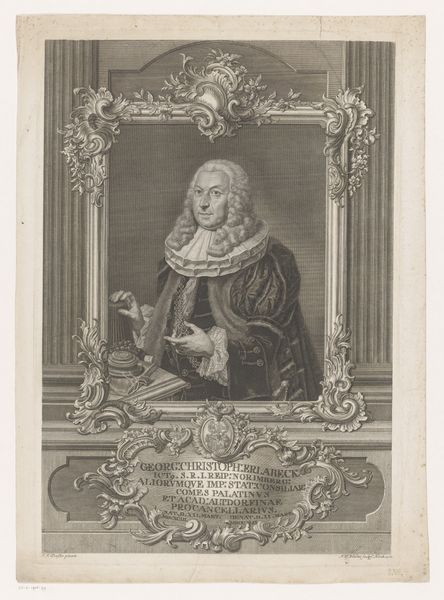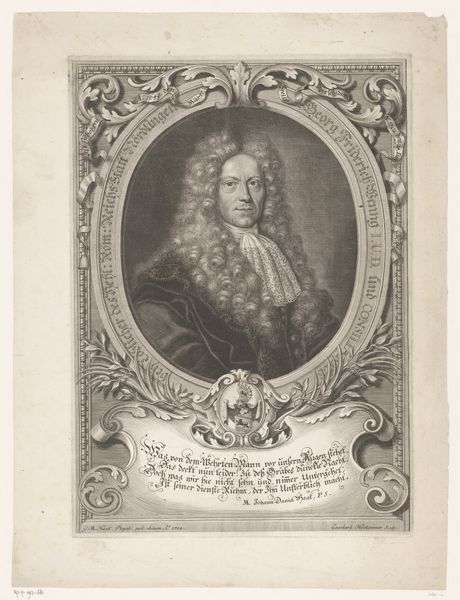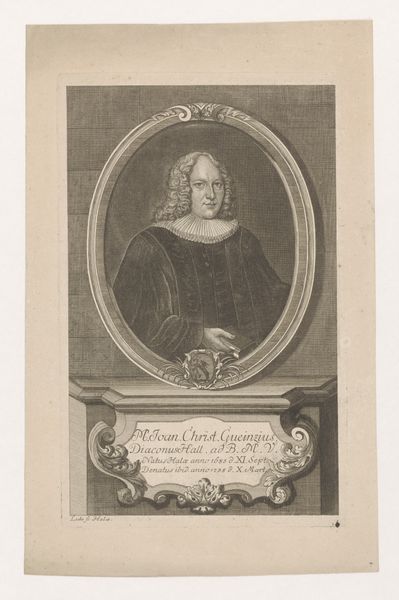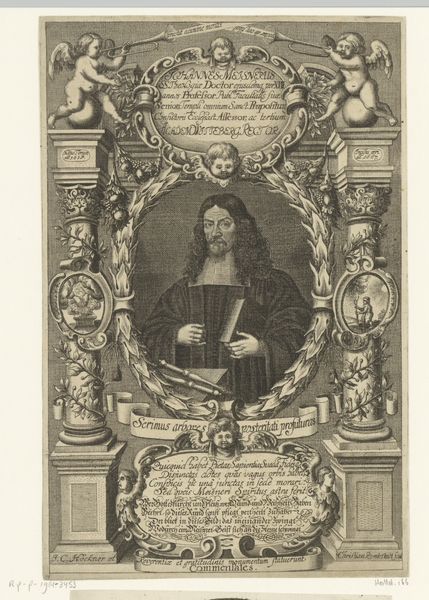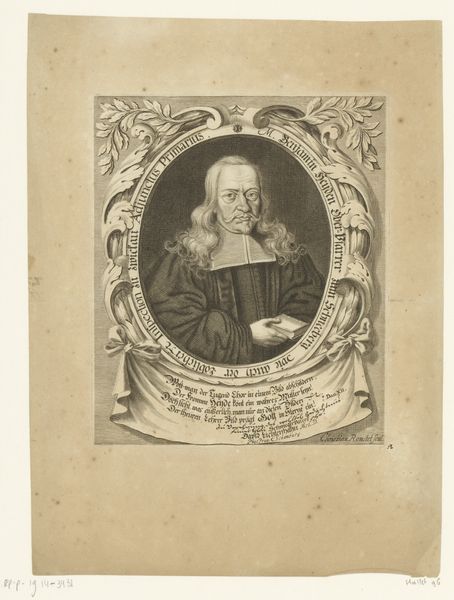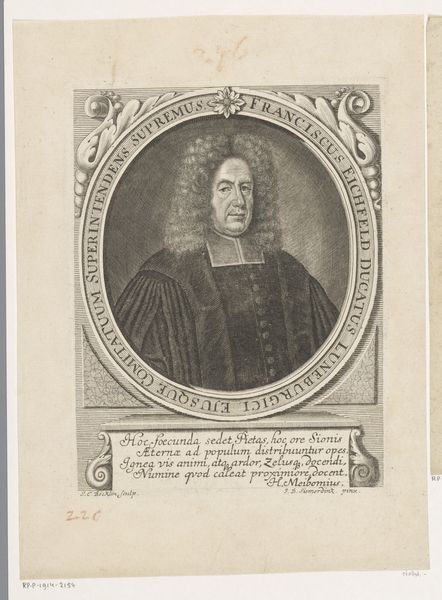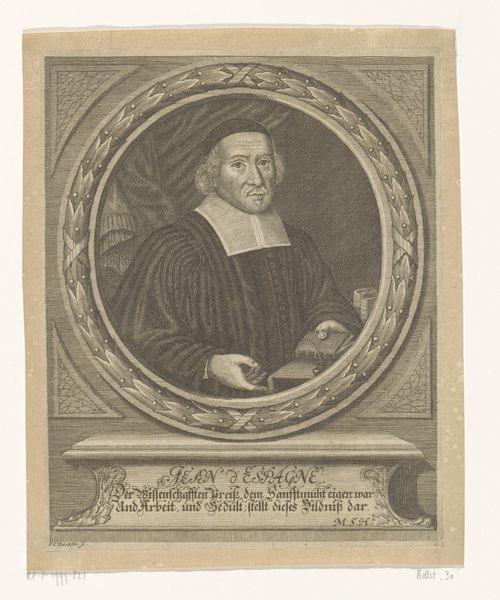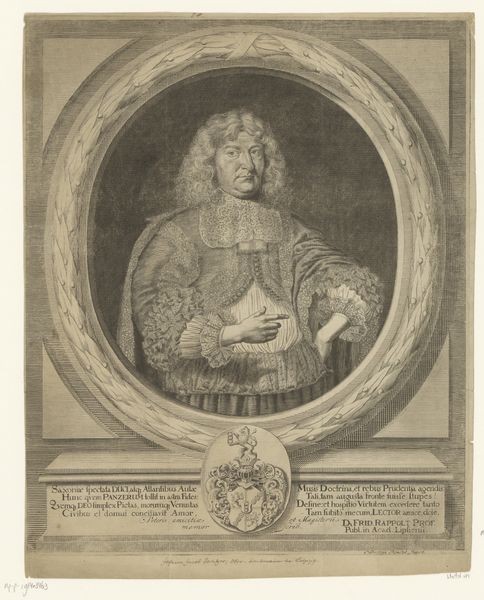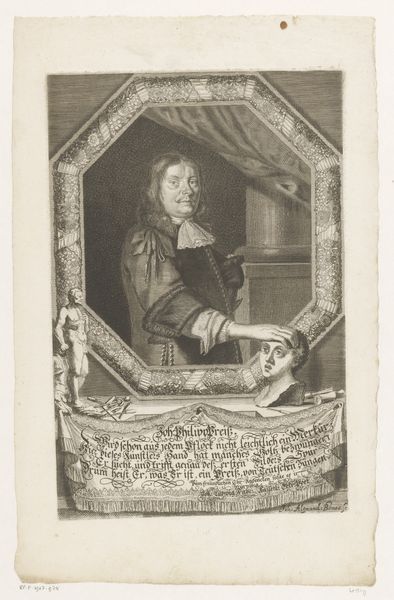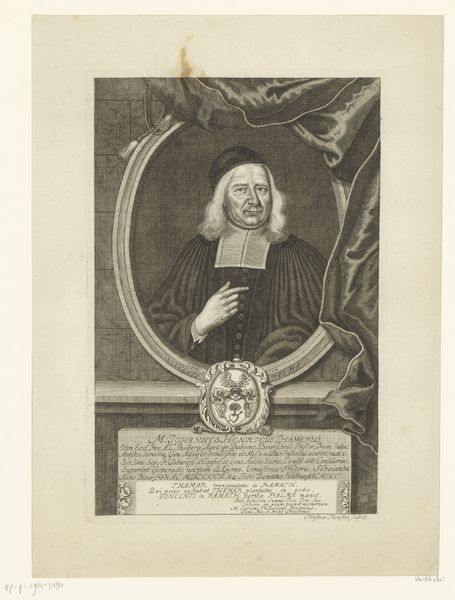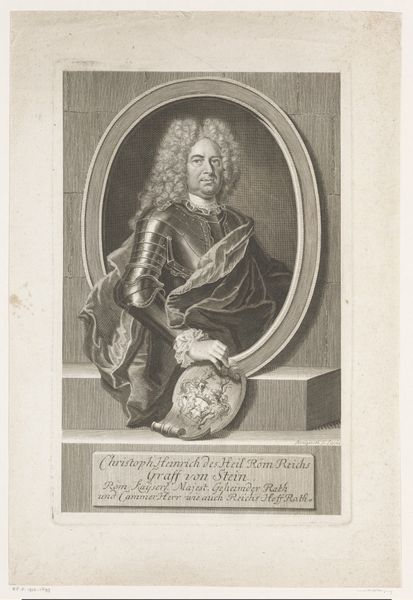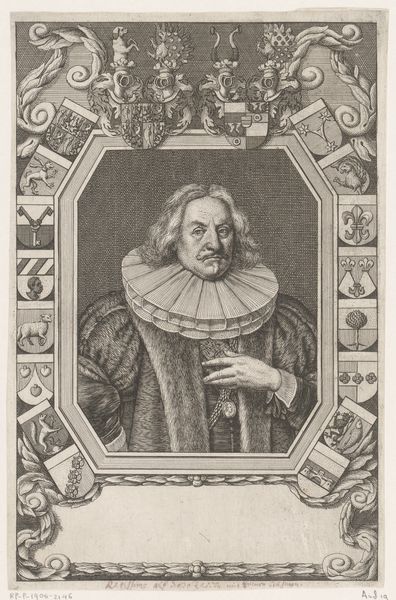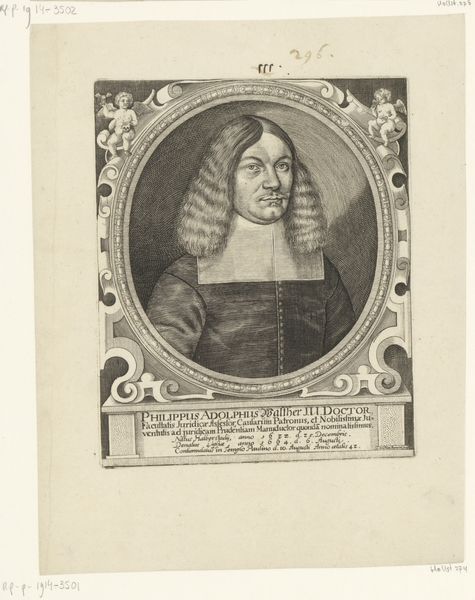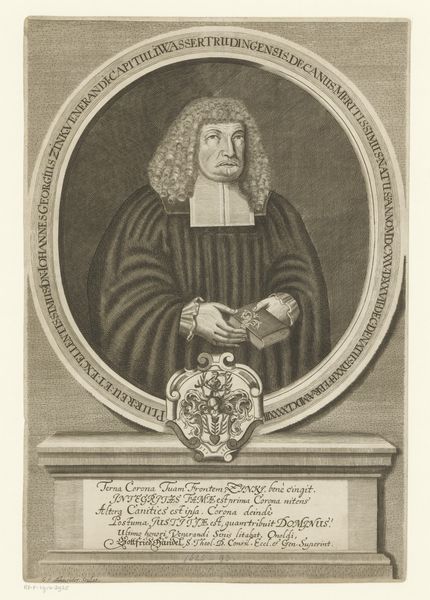
print, etching, engraving
#
portrait
#
baroque
#
pen drawing
# print
#
etching
#
old engraving style
#
figuration
#
highly detailed
#
history-painting
#
engraving
Dimensions: height 286 mm, width 210 mm
Copyright: Rijks Museum: Open Domain
Curator: Looking at this print, titled "Portret van Christoph Pincker," dating from sometime between 1665 and 1721, the first thing that strikes me is the sheer density of information encoded within it. Editor: Whoa, "density" is right. It's like a visual encyclopedia threw up all over a portrait. My initial vibe? Intricate, but a little…stuffy. Like a lawyer’s waiting room in the afterlife. Curator: Indeed. This etching and engraving, showcases Christoph Pincker, but also surrounding him, we find symbols of his status and accomplishments. Consider the putti, heraldry, and allegorical scenes within the ornate border—each detail signifies specific aspects of his life and social standing. The text above and below his portrait, it amplifies his achievements even further. Editor: Okay, now I see why it's so packed. It’s like a Renaissance resume, right? Visual CV! But the artistry itself is impressive. I mean, look at the detail in his hair, or the little landscape scenes tucked into the border. It almost feels like two separate artists were at work – one focused on the man, the other on creating an environment to signal all his accomplishments.. Curator: Precisely. The Baroque style favored ornamentation and theatricality. Here, everything speaks to Pincker’s virtues and contributions—Justice, Piety. These visual elements function almost like memory prompts. Back in this time portraits reinforced and solidified their reputation in the eyes of the public and descendents. Editor: Makes me wonder what Pincker himself thought of it. Did he commission this piece himself? Did he have opinions on the symbolism of each individual component, each individual line, shadow? Curator: Likely yes, or at least his family approved the portrait's composition. Consider that in the Baroque era, the representation of an individual carried significant social and political weight. A portrait of this magnitude would serve to solidify their place within society. Editor: Well, it's definitely effective. Although all that detail still makes me slightly claustrophobic! Still, It's really made me consider how portraits once served a social purpose quite different to those purposes now. It's been illuminating. Curator: Agreed. This dive into visual language always provides a fresh appreciation for how cultures speak to each other, and themselves, through symbols.
Comments
No comments
Be the first to comment and join the conversation on the ultimate creative platform.
